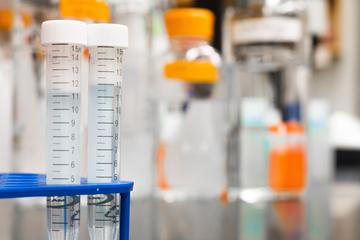Research Themes
Organic semiconductors are widely used for fabricating organic thin-film transistors (OTFTs), with a wide range of applications in wearable electronics and the internet of things. Intermolecular overlap between electronic orbitals on neighbouring molecules, optimal for transport, can be guided by the subtle balance of electrostatic and van der Walls forces, and the steric size effects of carefully chosen side groups. Our group focuses on understanding processing-structure-property relationships, which are key to making robust organic transistors in a reliable and reproducible fashion. One active area of research is the development of electron-transporting (n-type) materials which can deliver higher mobilities and are stable under ambient conditions.
Organic bioelectronics aims to couple electronics with biological systems and develop a range of devices for healthcare monitoring, diagnosis and therapy. Our group aims to develop organic semiconductors which can be used as active materials for these devices, with particular focus on improving the performance of the device and introducing specific molecular functionality to target different biological systems. A typical device architecture is the organic electrochemical transistor (OECT), which is capable of transducing and amplifying biological fluxes into electronic signals in an aqueous environment. Our work involves identifying structure-property relationships and design strategies for the development of OECT materials, with several examples of high performing p-type OECT materials. Building on these strategies, recent work focuses on extending the scope and improving the performance of n-type materials for bioelectronic devices operating in aqueous electrolytes.
Photocatalytic generation of fuels from abundant sources such as water and carbon dioxide in an attractive method to capture and store solar energy. Previous research has been mainly dedicated to inorganic semiconductor photocatalysts, which typically show wide and difficult to tune bandgaps, and thus are not able to absorb a significant portion of the solar spectrum. This has generated interest in organic semiconductor photocatalysts, which offer numerous opportunities for optimisation of their energy levels and properties through chemical design. Current work involves improving the morphology of organic semiconductor heterojunction nanoparticles for enhanced photocatalytic efficiency and developing porous frameworks for CO2 reduction.
Organic photovoltaics has experienced significant progress in recent years, with power conversion efficiencies > 15% now being routinely reported for devices fabricated in laboratories. Organic solar cells are diode structures, typically comprising both a light absorbing electron donor semiconductor and an electron accepting semiconductor, with a nanoscale blend microstructure or bilayer, creating an interfacial heterojunction. Research in our group focuses on designing new materials which have well designed electronic energy levels capable of generating larger cell voltages, absorbing more photons, improving charge separation, avoiding geminate and bimolecular recombinatilon losses and having optimal transport properties. Following the development of a non-fullerene acceptor with remarkable stability, our works aims to understand its structure-property relationships and investigate derivatives of this material.



